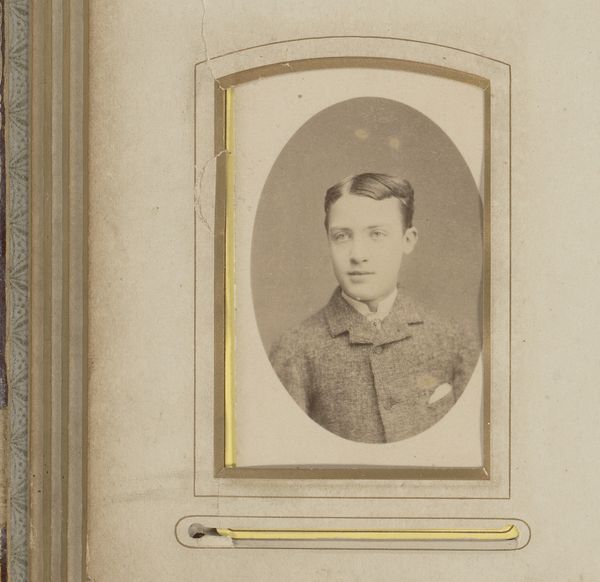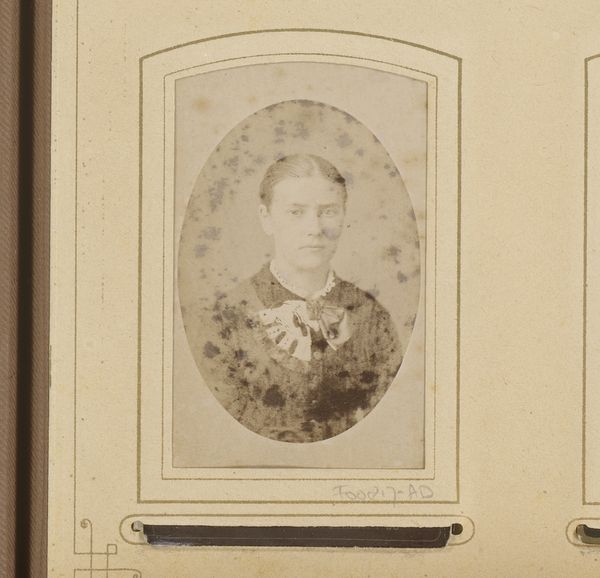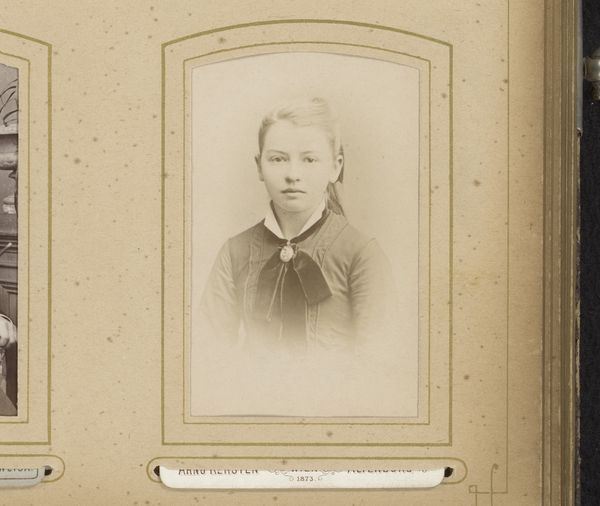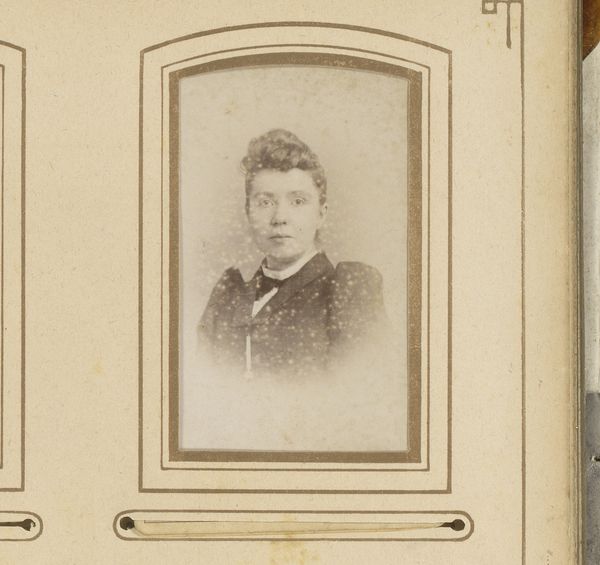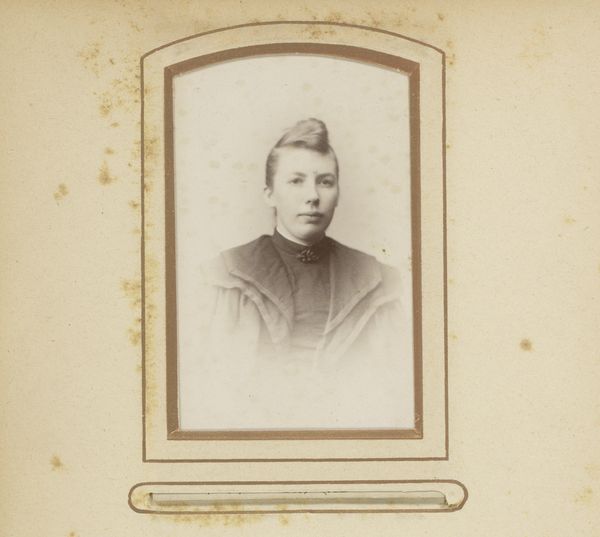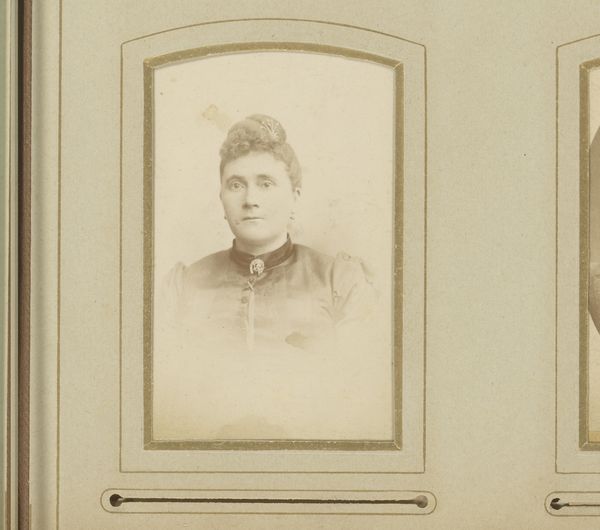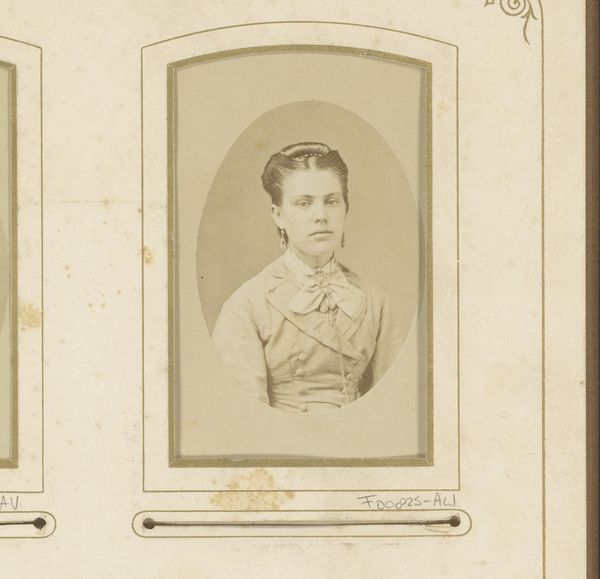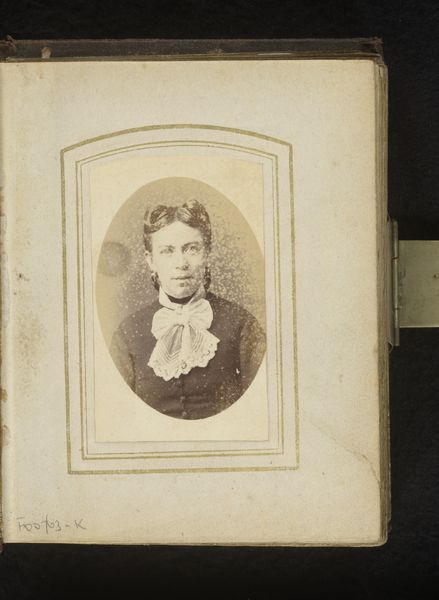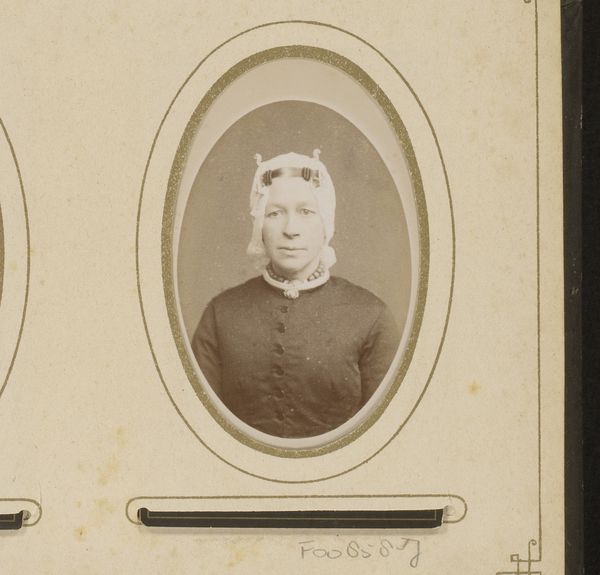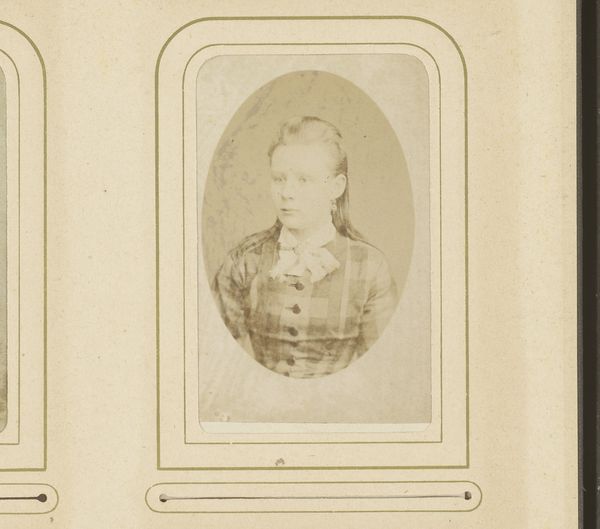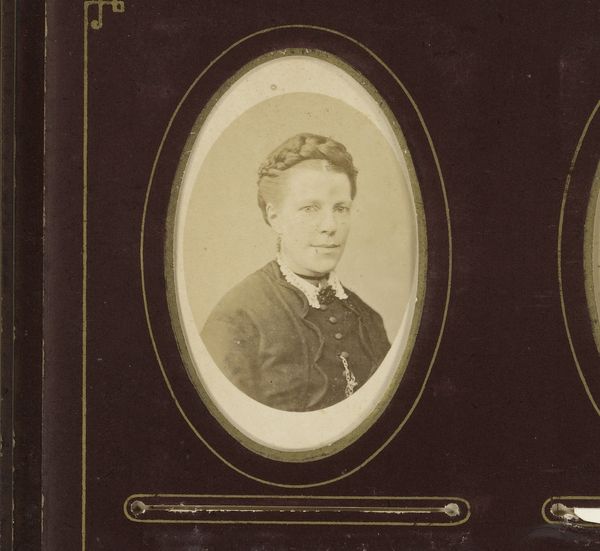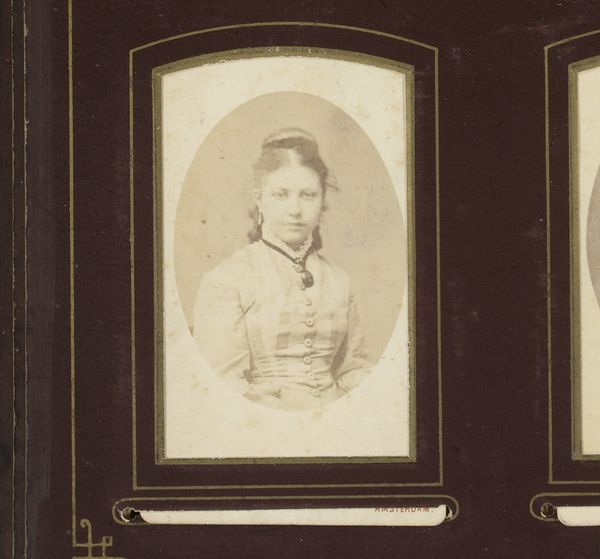
photography, albumen-print
#
portrait
#
photography
#
albumen-print
#
realism
Dimensions: height 82 mm, width 53 mm
Copyright: Rijks Museum: Open Domain
Curator: Welcome. Before us is "Portret van een man met snor en vlinderstrik"—"Portrait of a Man with Moustache and Bowtie"—an albumen print photography likely taken between 1850 and 1880. It appears to be an unadorned, straight-forward portrait, quite typical for the era. Editor: My first impression is one of a reserved sadness. The soft, muted tones of the albumen print, coupled with the subject’s solemn gaze, evoke a certain melancholic air that feels distinctly Victorian. Curator: Yes, the tonality indeed lends a certain gravity. Notice, though, how the photographic technique itself dictates much of the mood. The relatively long exposure times of early photography often resulted in sitters adopting serious, stoic expressions. There is an intrinsic tension, a deliberate choice between subject, frame, and development. Editor: I agree the technical limitations shape it. Yet, the sternness could be interpreted as an assertion of middle-class identity—an intentional contrast to frivolous aristocratic portraiture. A new professional class emerging. What's interesting to consider is that there seems to be almost no historical information regarding the name, social status, or any attribute of the subject; without these pieces, the act of contextualization falls apart. Curator: Perhaps. From a purely compositional view, note the carefully arranged placement of the subject within the oval frame, its subtle lines creating emphasis within a larger rectangular structure. The frame becomes integral; it underscores the man's stillness. The texture is almost sculptural in its stark stillness. Editor: It reminds us that photographic portraits served as accessible keepsakes and symbols of familial connections. To display such artifacts in bourgeois parlors asserted newly empowered claims of family, tradition, legacy. Without its original location as an object from a Victorian-era family photo album, we can still sense a history and memory despite a lack of information about the subject, a kind of melancholic phantom. Curator: Precisely! Regardless of intention, we still come to view, from today's lens, the impact of these formal aesthetic choices—the use of tone, symmetry, and framed form, ultimately define our engagement. Editor: True. Even in its relative austerity, this portrait whispers to us about individual agency within the currents of broader social forces, of how a simple, material image contains an immense set of relations within it, some graspable, most—like our phantom portraitist—likely never fully illuminated.
Comments
No comments
Be the first to comment and join the conversation on the ultimate creative platform.
